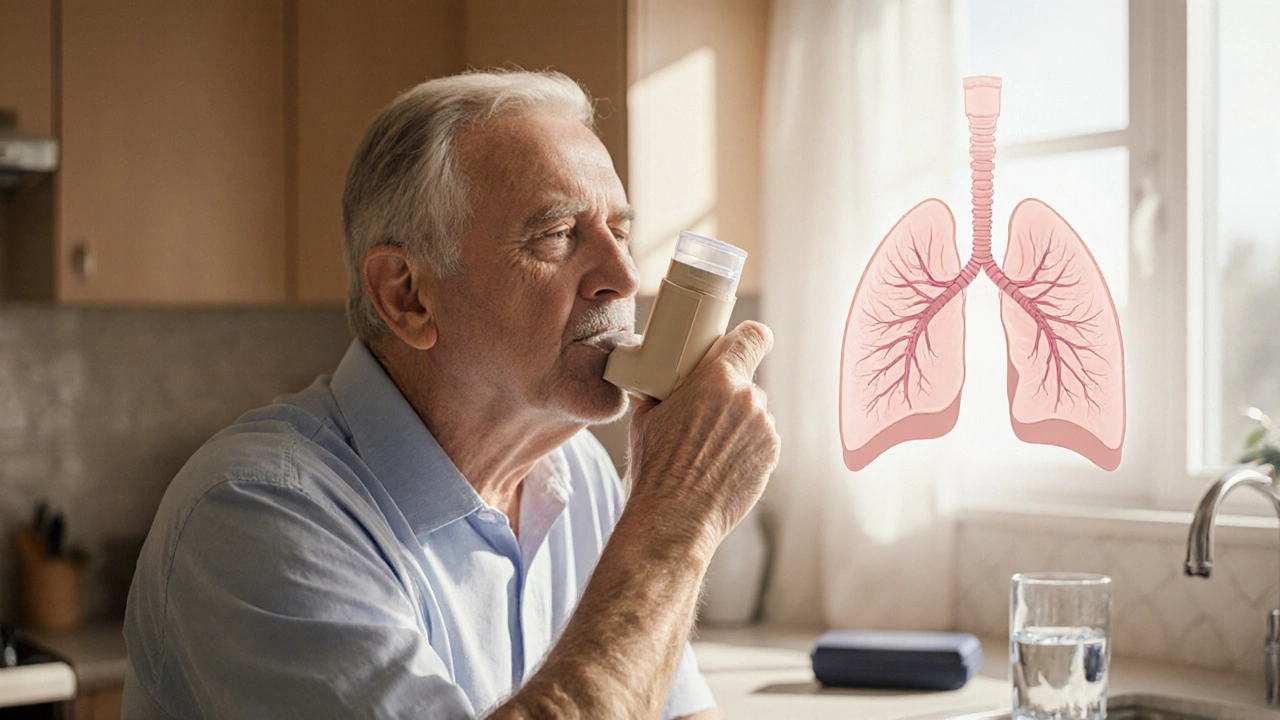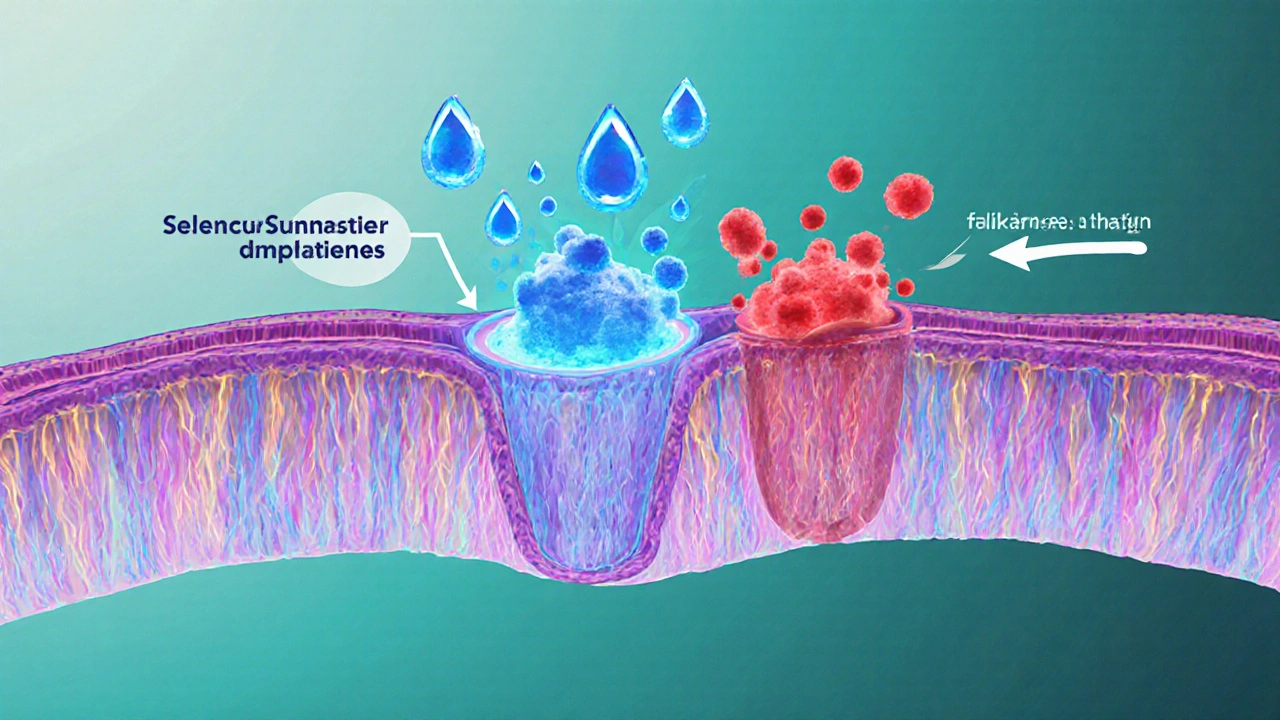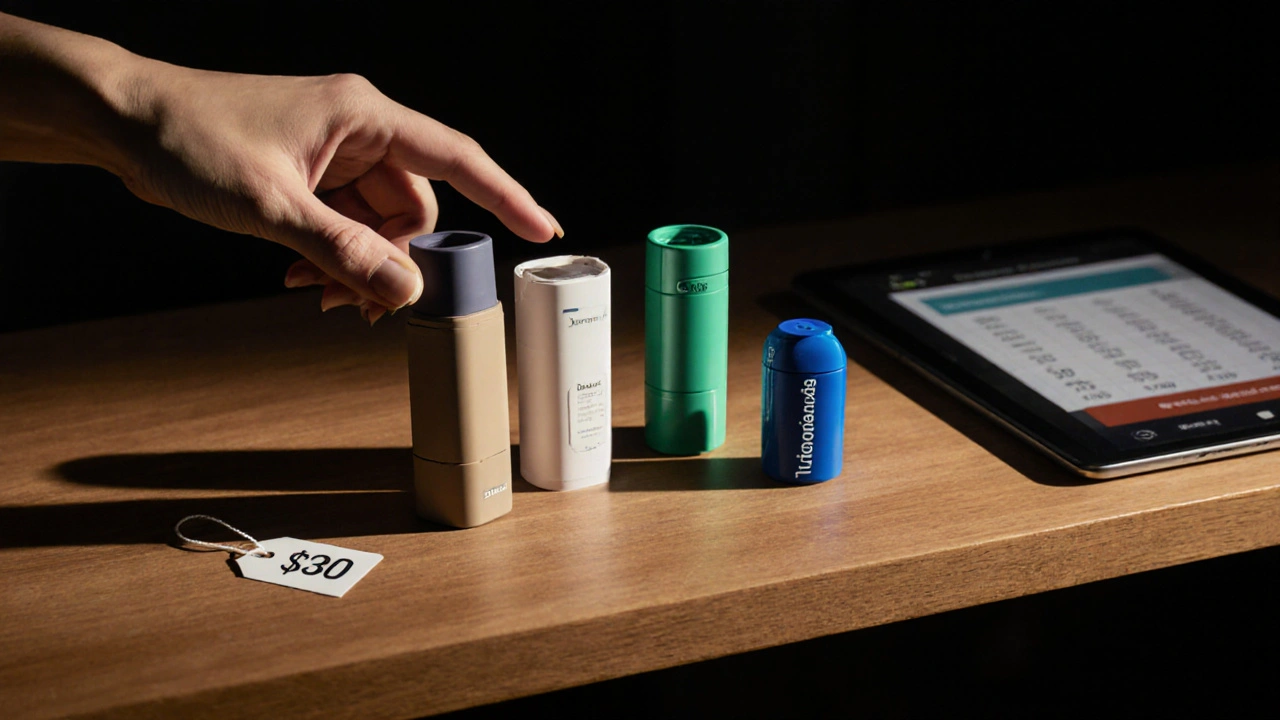
Select the inhaled steroids you want to compare. The tool will show a customized comparison table based on your selections.
When you hear Beclomethasone Dipropionate is a synthetic inhaled corticosteroid used to control asthma and COPD symptoms, you probably wonder how it stacks up against other options. This guide walks through what BDP does, who benefits most, and how it compares to the most common alternatives on the market today.
Beclomethasone dipropionate is a pro‑drug that converts to active beclomethasone in the lungs, delivering anti‑inflammatory action directly to airway tissues. It typically comes in a metered‑dose inhaler (MDI) or a dry‑powder inhaler (DPI) and is prescribed for moderate‑persistent asthma and chronic obstructive pulmonary disease (COPD).
The drug’s potency sits in the mid‑range of the inhaled corticosteroid class. In practice that means you’ll usually take it twice a day, but the once‑daily schedule of some newer steroids can be more convenient for busy patients.
All inhaled corticosteroids bind to glucocorticoid receptors in airway epithelial cells, reducing the production of inflammatory mediators like cytokines, prostaglandins, and leukotrienes. Beclomethasone dipropionate activates these receptors after enzymatic conversion in the lung tissue, leading to decreased mucus production and less airway swelling. The result is smoother breathing and fewer asthma attacks.

For adults with moderate asthma, the usual starting dose is 200-400µg twice daily via an MDI. Children aged 4-12years generally start at 100µg twice daily. Clinical trials show that BDP reduces daily symptom scores by roughly 30% and improves peak expiratory flow (PEF) by 10-15% after 4weeks of consistent use.
When paired with a short‑acting bronchodilator for rescue, BDP provides a solid baseline of control. However, compared with high‑potency once‑daily agents, the twice‑daily schedule can affect adherence, especially in teenagers.
Side effects are largely local because the drug is delivered straight to the lungs. The most frequent complaints are:
Systemic absorption is low, but long‑term high‑dose use can modestly affect bone mineral density and adrenal function. Regular monitoring is advised for patients on >800µg per day.
Below are the most common inhaled corticosteroids you’ll encounter, each with its own strengths.
Fluticasone propionate is a high‑potency steroid often delivered via a dry‑powder inhaler (Diskus) or a press‑urized MDI. Its potency allows once‑daily dosing for many patients, which can improve adherence.
Budesonide is a medium‑potency steroid available in both MDI and DPI formats, known for a slightly better safety profile at equivalent doses. It’s popular for pediatric use because of a milder taste and lower systemic exposure.
Mometasone furoate is one of the most potent inhaled corticosteroids, typically prescribed once daily via a DPI. It’s useful for severe asthma but often more expensive.
Ciclesonide is a pro‑drug that activates only after inhalation, reducing oropharyngeal side effects. Its unique activation makes it a good choice for patients who struggle with thrush.
All these agents belong to the broader class of inhaled corticosteroids medications that target airway inflammation directly, minimizing systemic exposure.

| Attribute | Beclomethasone dipropionate (BDP) | Fluticasone propionate (FP) | Budesonide (BUD) | Mometasone furoate (MF) | Ciclesonide (CIC) |
|---|---|---|---|---|---|
| Potency (relative to BDP) | 1× (reference) | ~2× | 0.8× | ~4× | ~1.5× |
| Typical dosing frequency | Twice daily | Once daily | Twice daily (or once daily at higher dose) | Once daily | Once daily |
| Onset of action | 4-6hours | 3-5hours | 4-6hours | 2-4hours | 5-7hours |
| Common device | MDI or DPI | Diskus DPI / MDI | MDI or DPI | DPI | MDI |
| Oral thrush risk (with proper rinsing) | Low‑moderate | Low | Low | Very low | Very low |
| Average monthly cost (US, generic) | $20-$35 | $30-$50 (brand) / $25 generic | $25-$40 | $45-$70 | $35-$55 |
If you’re looking for a budget‑friendly option and don’t mind a twice‑daily schedule, BDP is a solid pick. It works well for patients whose asthma is controlled with medium‑dose steroids and who already own an MDI device.
Consider fluticasone or mometasone if you need a once‑daily regimen or have severe asthma that isn’t fully controlled on BDP. Budesonide might be preferable for kids because the taste is milder and the risk of systemic side effects is slightly lower at equivalent doses.
Ciclesonide shines for people who constantly get oral thrush despite rinsing; its activation only after reaching the lungs cuts that risk dramatically.
Yes, when taken at prescribed doses it is considered safe for years. The main concerns are local side effects (hoarseness, thrush) and, at very high doses, a small impact on bone density. Regular check‑ups keep these risks in check.
No. Switching inhaled steroids changes potency and dosing frequency, so a clinician should adjust the dose and monitor your response.
Both MDIs and DPIs are approved. MDIs are common, but if you have trouble coordinating breath, a DPI with a built‑in dose counter may feel easier.
Generic BDP typically runs $20‑$35 per month, while generic Fluticasone is a bit higher at $25‑$40. Prices vary by pharmacy and insurance coverage, so it’s worth checking a few sources.
Talk to your prescriber. They may switch you to a steroid with lower oropharyngeal deposition (like ciclesonide) or add an antifungal mouthwash for a short period.
Write a comment